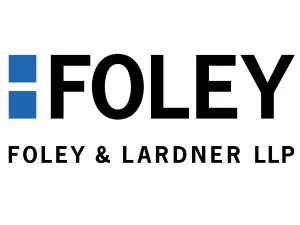- in United Kingdom
- within Coronavirus (COVID-19), Government and Public Sector topic(s)
- with readers working within the Banking & Credit industries
When acquiring a company that offers its employees retirement benefits via a 401(k) plan, a lot can go wrong and recent law changes and litigation trends have created more complications. Buyers who fail to understand and consider these recent developments run the risk of inadvertently harming participants, or worse, tainting their own 401(k) plan with liabilities created prior to the acquisition.
The Basics of Acquiring a Company with a 401(k) Plan
When acquiring a company with a 401(k) plan, a buyer's options typically depend on both the transaction structure and practical benefit administration considerations. Aside from 401(k) benefits, our team wrote a detailed article about how the structure of a transaction can impact different types of employee benefit plans, which can be accessed here.
Asset Transaction
In an asset deal a buyer can either exclude the seller's 401(k) plan from the transaction or assume it. Excluding the seller's plan essentially leaves behind both the assets and liabilities of the 401(k) plan for the seller's equity holders to manage after the acquisition.
However, even if buyer excludes the seller's plan, buyer will need to plan for a new post-closing landscape. Is buyer hiring seller's employees such that they will become participants in buyer's 401(k) plan? If so, how do buyer's benefits stack up against sellers? If buyer's 401(k) plan provides less generous benefits than seller's plan (e.g., lower match, no profit-sharing, etc.), buyer might need to weigh the risk of losing seller's employees because they don't want to take a haircut on benefits (or consider the cost of providing increased compensation elsewhere to offset). Buyer should also analyze its own 401(k) plan to determine if any amendments are needed to accommodate transferring employees (recognition of prior service credit, participant waiting periods, special eligibility rules, etc.).
If buyer assumes seller's plan, it can no longer be terminated (unless buyer doesn't sponsor a retirement plan), which means post-closing buyer can either merge it into another 401(k) sponsored by buyer or indefinitely maintain more than one plan, which we discussed in detail in an article that can be accessed here. If buyer maintains multiple 401(k) plans for an extended period of time, annual non-discrimination testing can be complex. If buyer intends to merge plans, that can only be done after an analysis is completed of the protected rights, benefits, and features of seller's plan (that need to be maintained) and liabilities that could flow into buyer's plan as a result of the merger.
Stock Transaction
In a stock deal a buyer can either require the seller to terminate their 401(k) plan pre-closing or let the plan continue post-closing.
Requiring termination pre-closing has two clear upsides: 1) this creates a participant distribution event; and 2) as long as the plan is wound down correctly, liabilities for pre-closing actions can be limited. The downside is that pre-closing termination requires proper planning and execution because this can introduce administrative complexities, such as coordinating with the buyer's 401(k) recordkeepers, participant loan transfers, mapping employee-elected rollover contributions, and ensuring seller's 401(k) plan is properly terminated. On the last point, to properly terminate and windup a 401(k) plan, it must comply with all required laws, which essentially means it needs to be amended to incorporate all required provisions (SECURE Act 1.0/2.0, CARES Act, minimum distribution requirements, etc.) and all optional or discretionary amendments that were adopted in practice, but without a formal amendment. Also, all benefits need to be fully vested upon the plan's termination (including any employer match or other contributions, such as profit-sharing, that would not have otherwise vested due to time-based vesting restrictions). If seller's plan has a stable value fund, special attention should be given to market value adjustments and whether this could adversely affect participants or other timing considerations for liquidating those assets. A recent court decision resulted in a significant proposed settlement after plan participants alleged that they lost money after a stable value fund experienced a market value adjustment resulting from a plan termination. In summary, terminating a 401(k) pre-closing is often the cleanest route from an ongoing legal liability perspective, if done correctly, but there are many detailed administration requirements to properly wind down the plan that buyer will need to manage.
If the seller's 401(k) plan isn't terminated pre-closing, then the buyer effectively assumes seller's 401(k) plan, which means it cannot be terminated post-closing (unless, again, buyer does not sponsor another 401(k) plan in its ERISA controlled group of companies). Going this route is the same as the asset transaction—the only way to "eliminate" seller's 401(k) plan is to merge it into buyer's existing 401(k) plan. Merging the plans can help with non-discrimination testing, provide a universal approach to employee benefits, and simplify administration and operations, all of which are discussed in detail in an article our team authored that can be accessed here. The problem with this approach is that all liabilities (including those that arose pre-closing) under the seller's 401(k) plan can flow to buyer's plan and spoil its tax qualification. As an example, if seller's plan failed non-discrimination tests that were not timely corrected, it will now be buyer's responsibility to fix. As time passes, recordkeepers and payroll providers change, and employee turnover occurs, it can be very difficult and expensive to fix these problems.
"Carve-out" Transactions
When acquiring part of a business (either via an asset or stock transaction), unique issues related to employee benefits and retirement plans often arise. What entity sponsors the 401(k) plan, and does it come along with the transaction or stay behind? Is a transition services agreement needed? Carve-out transactions come in a myriad of ways that are beyond the scope of this article, but it's important to note that deals involving the acquisition of a portion of an existing business often raise unique retirement plan (and other employee benefits) considerations.
Common Mistakes
Below is a list of the a few common problems we encounter when advising clients on how to deal with 401(k) plans in transactions:
- Seller cannot locate key plan documents, including all required amendments.
- Seller previously acquired companies with 401(k) plans, but did not properly deal with these plans (terminate, merge, or continue to actively manage and operate).
- Seller provides incomplete non-discrimination test results (e.g., doesn't contain all employer contributions, excludes entities and employees within the same tax-controlled group, applicable tests are missing, etc.).
- Buyer doesn't think about how to integrate employees and benefits until shortly before the anticipated closing.
- Seller's 401(k) plan trustees or other authorized decision makers for the plan will not be around post-closing.
- Seller's 401(k) plan has operational or other compliance problems (real liabilities are identified), but these issues cannot be fixed pre-closing.
Practical Advice When Acquiring a Company with a 401(k) Plan
When advising clients who plan to acquire a company with a 401(k) plan we typically start with a few basic questions:
- How do seller's employee benefits stack up against your current benefit offerings?
- What post-closing employee benefit obligations or covenants is seller trying to negotiate?
- Do you have a preference for what the post-closing employee
benefits landscape looks like?
- Will all employees (including the newly acquired) participate in one suite of employee benefits or will the business operate semi-independent post-closing?
- Who will perform payroll/core HR functions for the newly acquired employees?
- Do you want to acquire the seller's 401(k) plan?
- If so, do you understand what you are buying, including potential liability exposure? Who is in charge of due diligence (inhouse staff, benefits broker, legal counsel, etc.)?
- If not, are you prepared to integrate the new employees into your existing payroll and benefits platform at closing?
Performing proper due diligence on seller's 401(k) plan can help inform these answers and guide a buyer to make decisions that minimizes legal liability exposure in a manner that can be operationalized. Acquiring and merging a cookie-cutter volume submitter 401(k) plan that passed all recent applicable non-discrimination tests is much different than gambling on an individually designed plan with early retirement benefits, expansive in-service distribution rights, and non-discrimination test results that cannot be located (or are incomplete).
Foley's Employee Benefits practice group is well-versed on recent law changes and litigation trends and routinely use this experience to advise parties on all transaction matters related to acquiring (or selling) a company with a 401(k) plan, including conducting due diligence, advising on implementation and termination options, drafting plan amendments, counseling on correction matters, and supporting post-closing integration and/or plan winddown actions. Beyond defined contribution plans, we have extensive experience supporting transactions that involve defined benefit plans, which we discussed in an article that can be accessed here.
The content of this article is intended to provide a general guide to the subject matter. Specialist advice should be sought about your specific circumstances.



